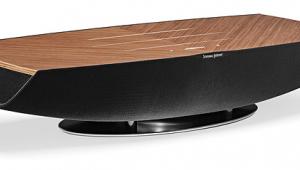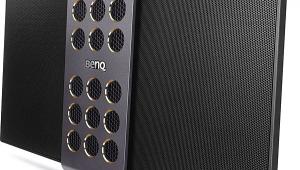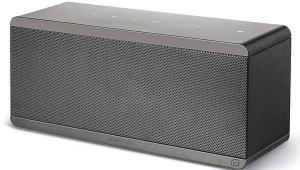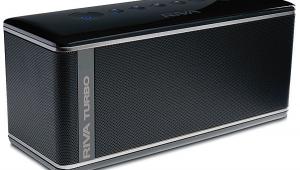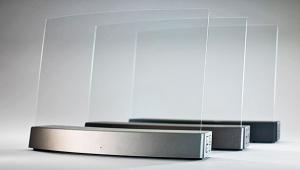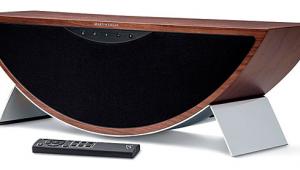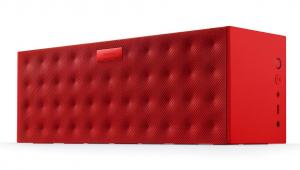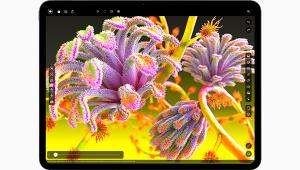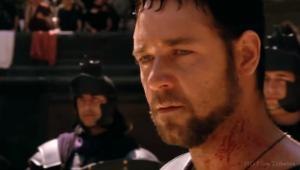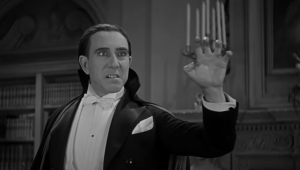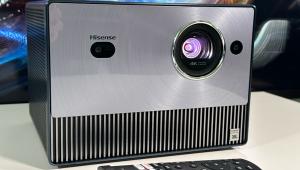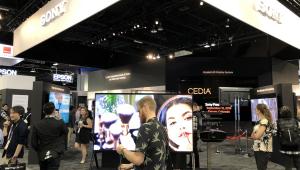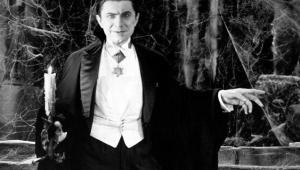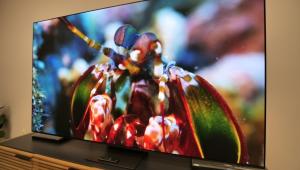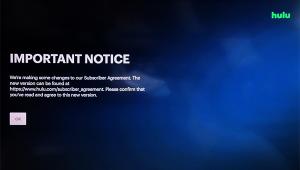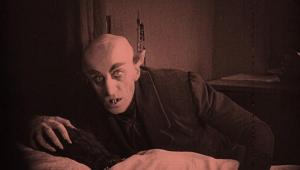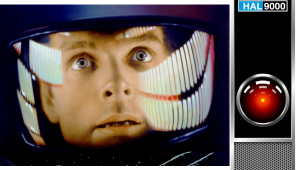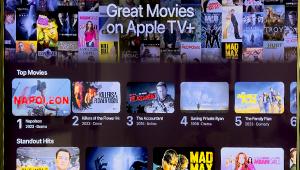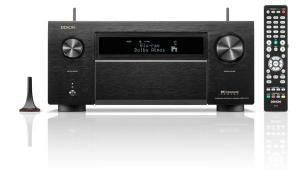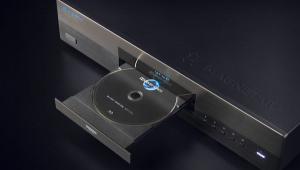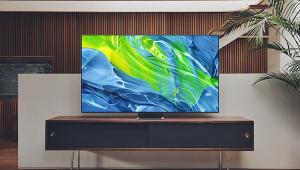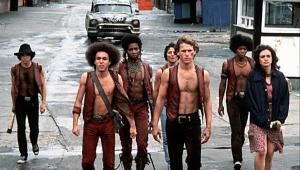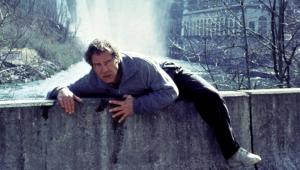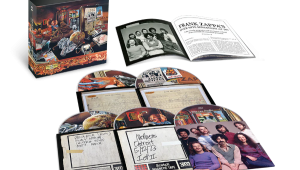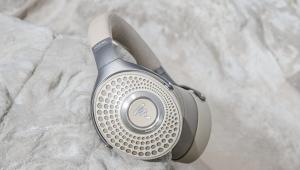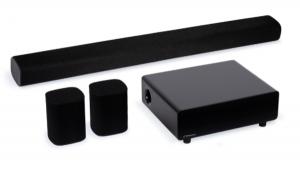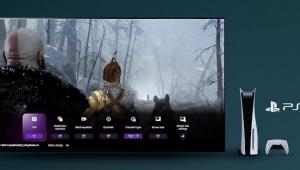These speakers are so great. Thanks for your review. I appreciate it and merge fruit which is truly intriguing
Klipsch The Nines Powered Speakers Review
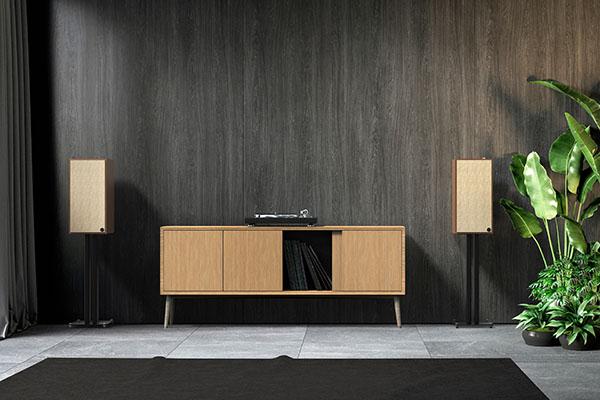
AT A GLANCE
Plus
Excellent treble clarity
Warm, rich bass
Placement flexibility
Minus
Powerful amplifier
Minimal tonal controls on remote
Dialogue clarity
THE VERDICT
The Klipsch The Nines speakers are in the Heritage Inspired Speaker line, and the sound signature is certainly aligned with their historic products. Warm, rich, with that legendary detailed high end that is always a classic.
Klipsch The Nines, found in the Heritage Inspired Speaker lineup, harken back to a time when HiFi stereos were all the rage. Even The Nines’ logo is 100% mid-century modern inspired. It’s no secret that the legendary Klipsch speaker company was bought by Voxx (originally Audiovox), it should be noted that Voxx recently acquired Onkyo. Now it all makes sense – let’s put classic Klipsch speakers in a cabinet powered by a 240-watt amplifier (480-watt peak power), using knowledge and expertise from that latest acquisition. The result: self-powered, bi-amped speakers with the signature Klipsch horn; no receiver or additional amplifier needed.
Features
The Nines are self-powered and interchangeable - you can select which speaker you want to be left or right, since one speaker must be plugged into AC power. The Nines feature a high-excursion 8” woofer (I know, didn’t you expect a 9” one?) in a ported configuration and a 1” titanium tweeter with the Klipsch-exclusive Tractrix horn.
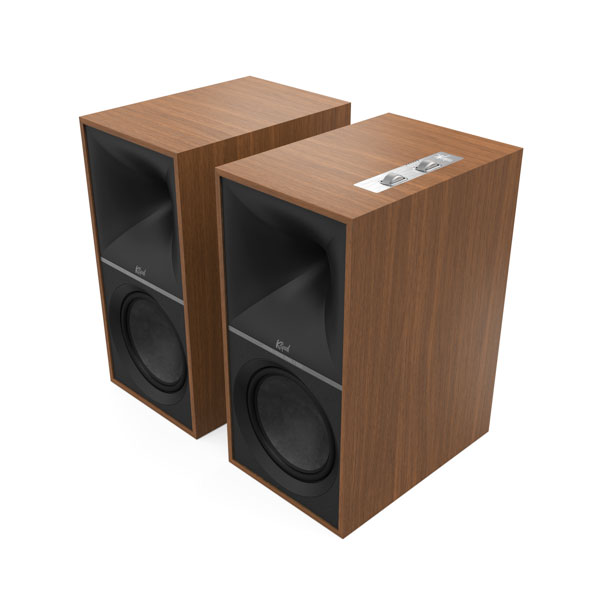
The 90-degree by 90-degree silicone horn extends completely to the edges of the cabinet. The drivers are housed in a luxurious-looking MDF cabinet with real-wood veneer in either black or walnut finishes and the color-coordinated speaker grilles are removable. Instead of rubber feet, there are cork pads on the bottom. I had no problem sliding them around on my hardwood floors without concerns of scratching.
On top of the active speaker you’ll find a subtly attractive flush-mount aluminum panel with The Nines logo and two brushed aluminum vertical knobs, one for input selection and the other for volume. The knobs have a luxurious feel and elegant look. All other connections and switches are on the back panel. All digital inputs use 192kHz/24-bit decoding for hi-res reproduction.
The Nines ship with a 13-foot proprietary speaker connect cable that runs from the active speaker to the passive speaker; an additional 6-foot extension cable is available as well. The power cord is also a generous 6.5-feet long, and the active speaker can be selected as left or right to make placement near a power source easier. The supplied 5-foot HDMI cable could be a little more generous to allow even more flexibility on speaker placement and assignment. There is also a 5-foot USB-B to USB-A cable for connecting a laptop as an audio source.
There is a selectable stereo RCA input for a turntable, with a switch for selecting line input or phono. There is a 3.5mm AUX input and a subwoofer output. In the digital realm, there’s an optical input and USB Audio input, along with HDMI (ARC). Also on the back panel is the power port, voltage selector, power switch and the secondary speaker output, along with a USB service port. The passive speaker only has the proprietary speaker cable input on its back panel.
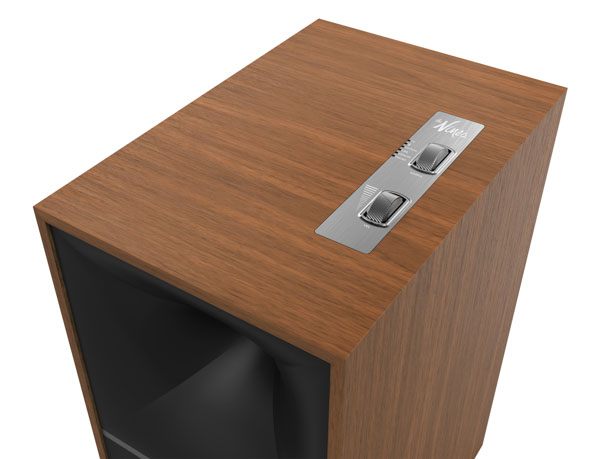
The supplied remote is simple, but covers most basic functions. You’ll want to download and connect to the Klipsch Connect App for access to all software functions. The remote has power and play/pause right at the top. Next down is a multi-function wheel with volume, subwoofer level, and mute located in the middle. There’s a subwoofer reset and then all of the source selects: TV/ARC, Bluetooth, AUX, Phono, Optical and USB. I would have loved to see controls for some of the DSP modes more easily set on the remote instead of only in the app.
The Klipsch Connect app is where things get interesting. With Bluetooth activated on my phone, it found The Nines easily and connected to the app. The home page brings you right to the good stuff. There’s a Vocal EQ preset that drops some bass and adds to the midrange to enhance vocal clarity. This setting is ideal for movies that lately seem to like mixing the dialogue low. The selectable Dynamic Bass setting is similar to a loudness control that keeps the bass balance consistent while overall volume is changed. This setting can also be activated by holding the sub reset button on the remote for 3 seconds, or touching the source control knob on the speaker itself until it flashes. Night Mode reduces bass levels and also disables the Dynamic Bass setting. The home page also has an input selection button that opens a new screen with big graphics of each source, so even with my phone’s brightness down in my dark home theater, it was quite visible. There’s a volume control on the home page as well.
Klipsch’s app also accesses a customizable 3-way equalizer in the settings tab, with controls for bass, mids and treble. In the settings tab, you can name your speakers (I named mine Les Neuf, just to be more elegant.) The Auto Power tab selects if you want the speakers to power off automatically after 15 minutes of inactivity. The EQ tab is also on the settings page. I like that you can select a preset (Vocal, Bass, Rock, or Custom) as a starting point but still be able to further customize. While I liked the Vocal setting for movie dialogue, I wanted more low-end, so I could add back more bass from this section of the settings page.
An easily overlooked feature is on the settings page. There are three options for speaker placement: Corner, Wall or Other. It’s important to note how these settings affect the bass response. The Corner setting will reduce low bass by 6dB, while the Wall setting reduces it by 3dB. I selected Other that has no bass reduction so I could control the bass myself with the other EQ modes.
Performance
I reset all settings to flat, speaker placement to “Other” and settled in for some listening. I cued up the latest release from Sailor Jane. The album No Ordinary Dub is a reggae dub tribute to Sade with her greatest hits reimagined in a way only Sailor Jane can do - reggae with a seductive flair.
The title track and first single released is “No Ordinary Love.” Instantly, the bass of The Nines made a fantastic first impression. The heavy bass line filled my listening room with a warm, enveloping tone with a satisfying roundness. Delicate percussion fills placed on the edges of the soundstage really emphasized the precise imaging on the speakers. There is a heavy dose of reverb on the lead vocals that could muddy up the sound on lesser speakers; The Nines handled it deftly, keeping the rest of the track detailed while letting the decay on the vocals fade out smoothly. Her sultry alto notes conveyed naturally with an accurate, detailed tone.
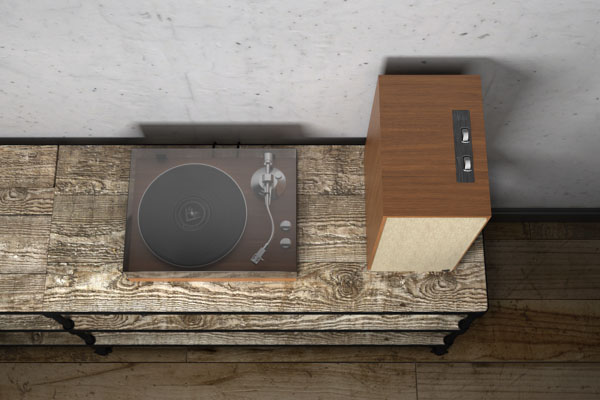
I couldn’t resist cuing up “Stronger Than Pride”, also reimagined by Sailor Jane, since it’s one of my favorite songs. This mix has a lighter, brighter quality, and it showcased the clarity of The Nines upper extension nicely. The balance between the lead vocals and the acoustic guitar is lovely, showcasing the legendary Klipsch horn technology. The speakers have a wonderful balance of treble clarity that never turns to harshness. I tend to favor a warm tone, and The Nines played right to that—full, round low-end but a clean, clear treble.
Next up was an unlikely pairing: The Rolling Stones and Lady Gaga on “Sweet Sounds of Heaven.” The wide stereo imaging was just breathtaking on this bluesy, soulful track. The guitars were spacious, and the hi-hat was clean and sparkling. Mixed down low in the track was a lovely organ that provided a great backdrop to the accurately reproduced piano. Lady Gaga’s background vocals are strong and passionate and stand out clearly above the rocking background track. Listen all the way through the end. This is one of those songs that makes you wish you could have been in the studio while it was being recorded - everyone seems to be having so much fun, especially when Jagger and Gaga trade off vamping. With the whole band playing strongly, each vocal note is clear and distinct. I couldn’t help listening to this song over and over on these speakers.
I switched over to movie-watching mode, turning on Dynamic Bass. I was anxiously awaiting for a set of full-sized speakers to use for watching Dune and I think The Nines were the speakers up for the challenge of this score and soundscape. Hans Zimmer used so many unorthodox instruments and techniques so it was an ideal test to fully appreciate his ingenuity. Almost from the very first scene, the score and sound effects were completely engaging. His use of rare metals, a bevy of 30 bagpipes, and even a 21-foot wind instrument was no challenge for The Nines. Even without a subwoofer, the steady, pulsing bass conveyed a sense of doom that was so fitting for this movie.
My home theater isn’t a huge space, but Hans Zimmer’s score fully engulfed my 12’ x 13’ room. When those 30 bagpipes play in unison (recorded in a church in Scotland) as the House of Atreides makes their arrival is a test for any system. The unique and complex frequency response of a bagpipe makes it a challenge to faithfully reproduce, and yet, The Nines captured the essence of the sound, along with a deep, pounding drums that pervade throughout the film.
The sound designers also had unique challenges and solutions that contribute to the other-worldly yet familiar sounds. These nuanced and original effects were clearly and distinctly audible. The amusing use of Rice Krispies mixed with sand used to foley the footsteps into spice-laced earth was easy to pick out due to the clarity of The Nines tweeter and horn combination. When Lady Jessica uses The Voice, actress Rebecca Ferguson’s voice is doubled with Marianne Faithfull’s hauntingly eerie voice. The Nines kept those subtle details clear and sharp, even over the roaring background engine and wind noise. While it might be tempting to watch a movie like Dune on a soundbar, trust me, you’ll want to invest in speakers like The Nines to fully experience every nuance and detail in the score and sound design.
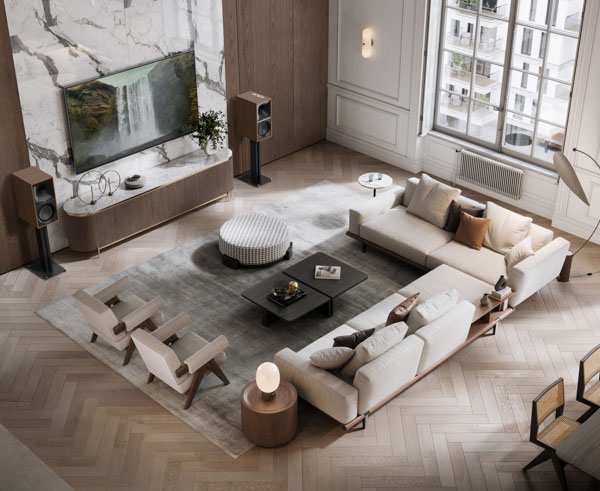
While the music and sound effects were fantastic, I felt that the dialogue on this and other audition viewings could be a bit more pronounced. Switching back to the Vocal EQ setting helped, but I wish there was a way to add a dedicated center channel to The Nines.
Conclusion
I sound like a broken record lately, but as more and more speakers come out that are self-powered with a multitude of input options, there are zero excuses to listen to a small, inadequate soundbar. If your significant other is complaining about large speakers, tell them to write me a note and I’ll do my best to convince them that the improvement in sound is worth the visual “sacrifice”, although The Nines would look great in any home.
The Nines let you create as wide a soundstage as you could want, especially with the additional speaker cable extension. With an 8” woofer, they provide a substantial bass response with a rich, warm sound, but also have a subwoofer output for even more low-end extension. The Nines have the signature Klipsch horn that gives the high-end clarity a transparent, natural sound with smooth dialogue and brilliant tonality to percussion and acoustic instruments. I wanted slightly better dialogue clarity and a few more tonal controls on the remote control, but other than that, there is little to fault with the The Nines.
Specs
Frequency Response: 34 Hz - 25 kHz, +/-3dB
Voltage: Switchable 100V-240V, 50Hz-60Hz
Dimensions:19.13 x 9.5 x 13.38 inches (HxWxD)
Weight: 28.4 lbs. Primary, 27 lbs., Secondary
- Log in or register to post comments


The products offers unparalleled elegance appealing only the the most demanding of clients, the ones that demand only the finest.All the original details, style and mechanisms have been exactly to in our product. But the most unbelievable thing is their price - The bests from our site are manifold much cheaper. WCKT Insert

